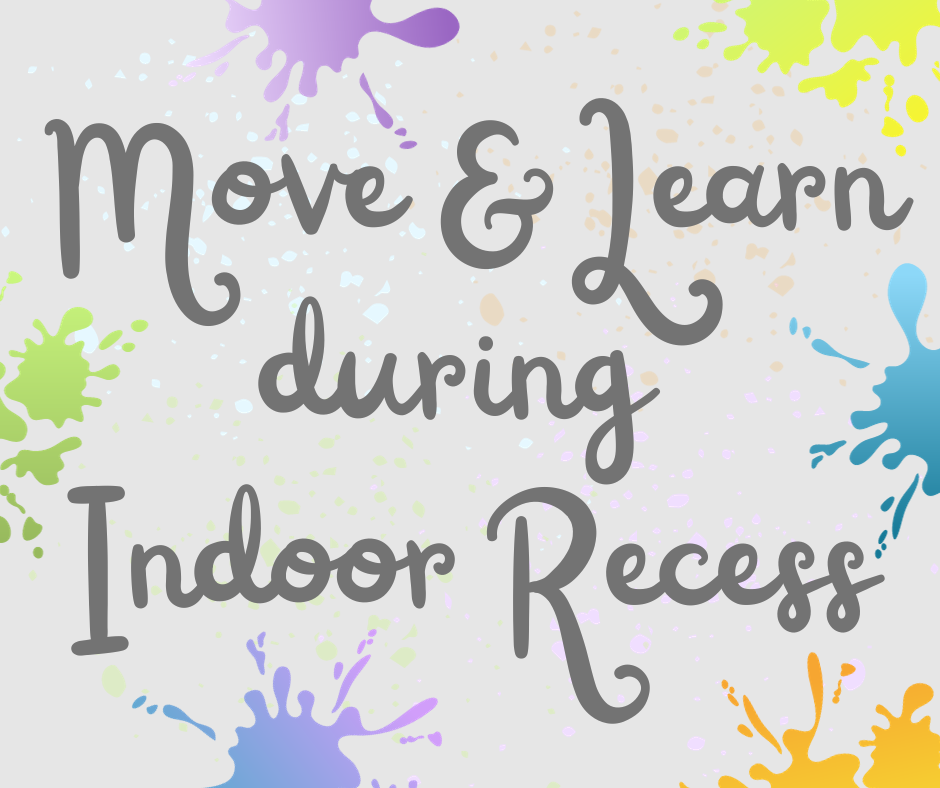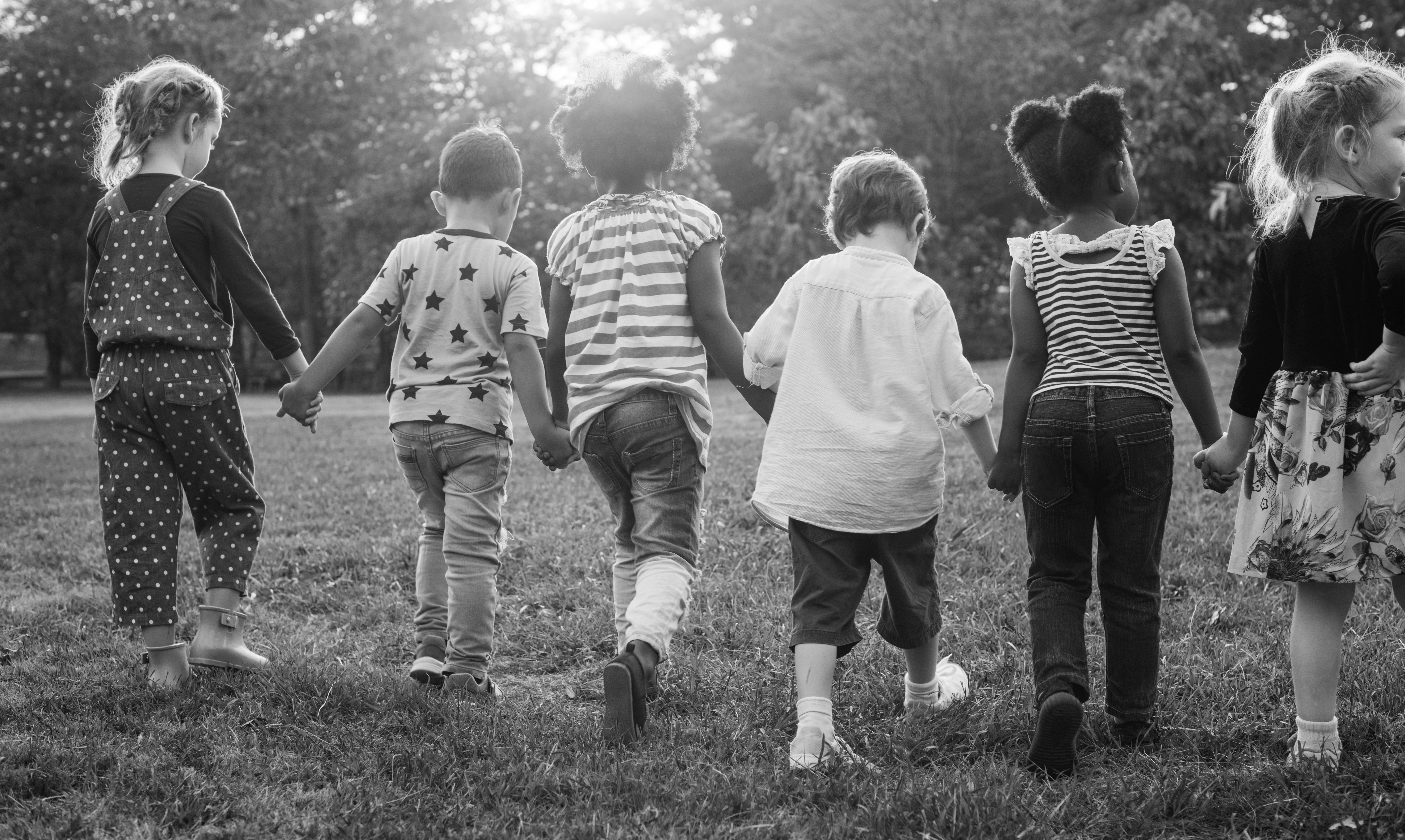
Indoor, Movement-Based Anytime Activities for Rainy Days
Rainy days are unavoidable, but they can put a damper on the school day during recess time. At Walkabouts, we understand the importance of movement throughout the day — especially during recess! Insert some fun into indoor recess with these movement-based activities and games.
INDOOR BOWLING
Set up the pins, and let the fun begin! While purchased sets will work, a more thrifty way of playing indoor bowling is with homemade sets that use recycled materials. Collect empty plastic water bottles with the lids attached. While 10 pins are used in a standard game, six pins will also work.
If the empty bottles are toppling too easily, put small, equal amounts of water, sand, or dried beans in the bottles to better anchor them. Set up the water bottle bowling pins in a triangle formation at the end of each team’s alley. Create free-formed alleys (down the aisle between desks), or measure and mark them with masking/painters’ tape. Larger inflatable, bouncy, or beach balls may be easier for younger students while smaller tennis or rubber balls may present more of a challenge for older students. Before playing, test the ball to be sure it will knock over the pins.
Divide students into teams and decide how many rounds of bowling each team will play. Ten rounds is traditional. Each player will roll the ball twice. The goal is to knock down as many pins as possible. At the end of each turn, the player should reset the pins for the next player.
Younger students: For younger students, the goal may be more about aim, coordination, staying active, and having fun!
- Consider whether to score games for younger students.
- Add a math element to the game, and have students do bowling subtraction. After each turn, ask players how many pins they knocked down and how many more remain to find the difference. This is a fun way to review math facts with movement!
Older students: Older students may be more interested in keeping score and learning the rules.
- Teach the rules of scoring for bowling. Students can then keep track of their bowling scores using a tally sheet.
- At the end of each game, ask students to use their math skills to determine the winner from their team.
EXERSTATIONS
Create exercise stations (Exerstations) throughout the classroom so students can rotate to them in small groups. At each Exerstation, students should do 8-10 reps of basic exercises and repeat 2-3 times as time allows. Quick exercise ideas include arm circles, criss-cross feet, jumping jacks, lunges, hopping on one foot, knee touches, toe taps, marching or running in place, running in place, and squats. Yoga poses are another option for variation and gentle stretching.
BALANCE BEAMS
Balance beam activities in the classroom can help students work on and develop gross motor skill, balance, body awareness, concentration, core strength, endurance, posture, and bilateral coordination. DIY classroom balance beams can be made by cutting a 2 x 4 in half and covering it with duct tape. Teachers can also make balance beam lines with masking/painters’ tape on the classroom floor.
Try these balance beam activities.
Roll the Dice Balance Beam Crossing
In Roll the Dice Balance Beam Crossing, students will move across the balance beam in a manner that coordinates with the number rolled on a die or pair of dice. Inform students that walking on the balance beam with their arms extended to the sides or hands on their hips will help them maintain their balance. However, some of the ways below are intended to challenge students, so they should take it slow and steady. This isn’t a race, it’s a coordinated exercise to build gross motor skills!
- Walk
- Hop
- Skip
- Tip-toe
- March
- Side-step
- Do High Kicks
- Walk Backward
- Walk Heel to Toe
For an extra challenge, ask students to put their hands, a beanbag, or another object on their head while crossing the balance beam.
Beam Challenges
Beam Challenges allow students to refine their gross motor skills after they have a feel for the beam. Students will up their coordination and work on directionality with beam challenges.
- Crawl Challenge: During the Crawl Challenge, students will bend down and move across the beam using both their hands and their feet. If desired, have students attempt the challenge going forward and backward.
- Pivot/Turn Challenge: During the Pivot Challenge, students will move across the beam and pivot or turn full circle and head back where they started.
- Step Challenge: For the Step Challenge, place small objects such as bean bags along the beam. Students must step over the objects as they move across the beam. If desired, have students attempt the challenge going forward and backward.
- Number Challenge: For the Number Challenge, place several sticky notes on the floor beside the balance beam and near the center. Write a number from 4-8 on each sticky note. When the student reaches the number, they must bend and pick it up without allowing their feet to step off the beam. They should then move that many steps forward and backward along the beam before continuing to the end.
Variations:
-
-
- Math Challenge: Write math problems with answers from 4-8 on the sticky notes. Students solve a problem and move that many steps forward and backward along the beam before continuing to the end.
- Spelling Challenge: Write spelling words with up to 10 letters on sticky notes. Students should spell the word letter-by-letter (one letter with each step) as they continue to the end of the beam.
- Vocabulary Challenge: Write definitions for academic or other vocabulary words on sticky notes. Students should spell the corresponding word letter-by-letter (one letter with each step) as they continue to the end of the beam.
-
These indoor, movement-based recess activities for rainy days are sure to keep your students entertained!
Web-based Walkabouts are the easiest way to activate elementary lessons with movement. Walkabouts are research-based adventures that transform math, language arts, and reading content into short, movement-rich activities for pre-K to 2nd grade students. Discover the power of kinesthetic learning from any device, in class or at home! Request a one-month trial today.





